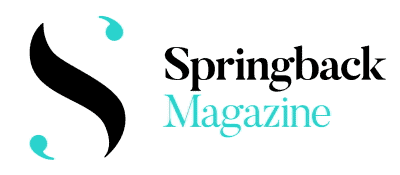‘Continuity in dance must be worked at. The minute you relax your efforts at preserving something, you start to lose it,’ writes Marcia B. Siegel in her book The Shapes of Change: Images of American Dance. Although the effort she describes refers to preserving seminal works of modern dance and the responsibility of the critic in shaping such cultural memory, ‘continuity’ is a concept with strong connotations. It is not just about conservation; it is about the ability to remain in dialogue with the past, while animating both present and future. Continuity, hence, is very relevant to the current case of the Duncan Dance Research Center in Athens, whose future remains uncertain after a law passed that diminishes its autonomy and threatens its uninterrupted interrelatedness with the dance community. The question though to ask is: what remains?
The Duncan Dance Research Center was until recently the only centre available for research, residencies, networking, community building, educational projects, exploration and implementation of artistic eco-practices in the dance context. The building itself is of inestimable historical and architectural value, designed and built in 1903 by Raymond Duncan (Isadora Duncan’s brother), but since then it has had a tumultuous history. After the Duncan family fled Greece in the 1920s, the building was used as a tavern, was later besieged by the Germans during the second world war, suffered damage in the Junta years (1967–74). Only in the 1980s did the Municipality embark on its restoration, acknowledging the international stature of this unique ‘monument’ in the neighbourhood of Vyronas. Ever since, the DDRC has remained the property of the Municipality.

Despite the weight of its history, the DDRC in its recent form has managed to establish an ongoing dialogue between past and present, empowering the emergence of contemporary dance artists and remaining attuned to shifting socioeconomic conditions. Since 2006, the DDRC has advanced and supported a great number of partnerships with national and international art institutions (among them the Kalamata International Dance Festival, the Athens Epidaurus Festival, European Dance Development Network, L’Institut français de Grèce, the British Council, the University of Athens, and local schools), further solidifying its importance and visibility within and beyond the artistic community.
In the Greek context (similarities can of course be found with other cases, internationally), dance artists rarely receive support for their research, and even more rarely find such a place which also accommodates a wide variety of projects pertaining to an expanded understanding of dance/choreography, and to the empowerment of community at large. Thanks to its prior legal status, the DDRC had been able to benefit from its relative administrative autonomy from the Municipality of Vyronas. Despite being primarily funded by public-municipal sources, its daily programming, curatorial decisions, and involvement in European projects remained relatively unobstructed, and resulted in many fruitful collaborations: PLANT, Zoom-in, Moving Ground, Living Project, Pilgrim, to name just a few.

The new law, passed by the Ministry of the Interior in January 2024, brings about the abolition of legal public entities belonging to municipalities, which ultimately results in transferring their responsibilities, organisational units, and staff positions to the Municipality. What does this mean for DDRC, practically? How does it affect its running? Official clarifications are still pending, but certainly the DDRC will no longer be a ‘research centre’ – a major shift from its current vision.
As expected, the bill had been received with scepticism by members of the dance community, who began a campaign of awareness and support by collecting signatures, and addressing a letter to the Ministry of Culture and the Municipality of Vyronas – all of which went public in November 2023, while the new law was still under discussion. They insistently expressed their concern about the lack of understanding about the valuable work done by the DDRC and about its long-running but now former artistic director, Penelope Iliaskou. Iliaskou, together with a small team of devoted colleagues (Annie Hatzikonstantinou, Katerina Kaltsa, Katerina Katsarou, Lena Kita), had been the soul of the DDRC and played a vital role in repositioning it in the European dance context, while her consideration and care of artists allowed the DDRC to ‘remain a home’, as she once said in an interview. Home in terms of hospitality, of sharing practices, of nurturing bonds that could, under different circumstances, provide the grounds for a healthy community. As a dance writer and correspondent, I have had the chance to witness many of these ‘communal gatherings’.








